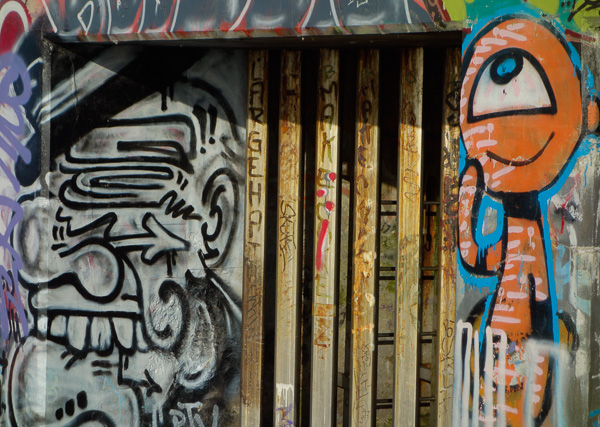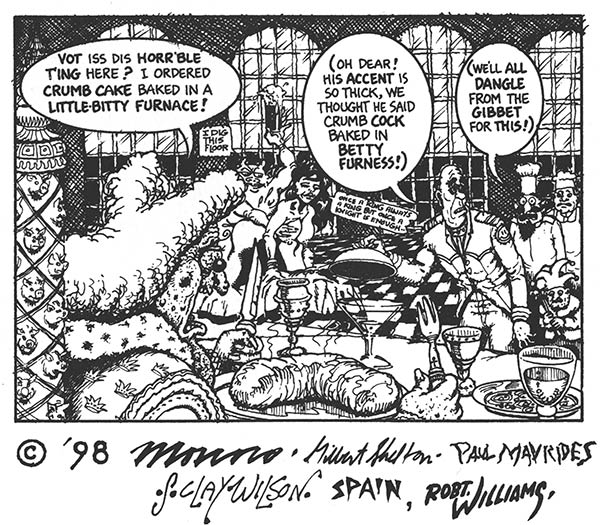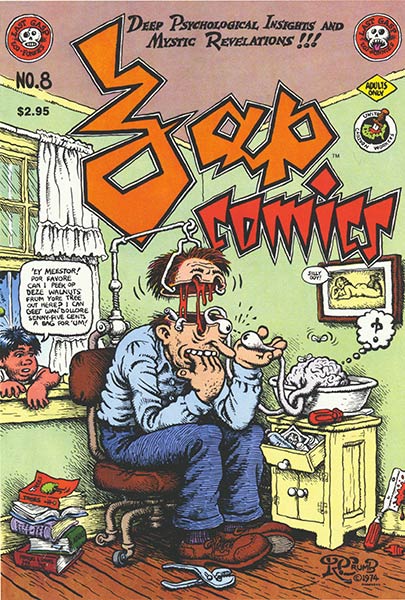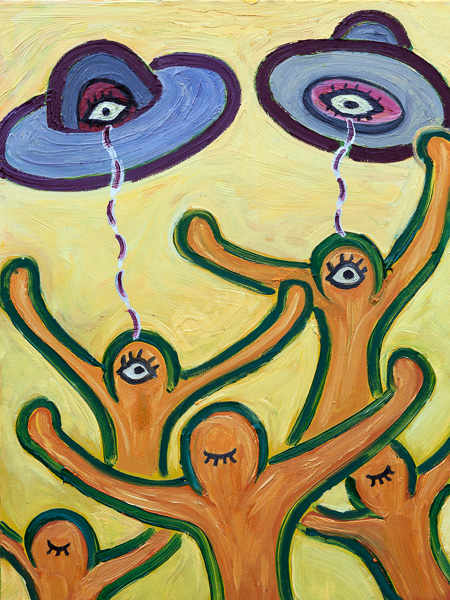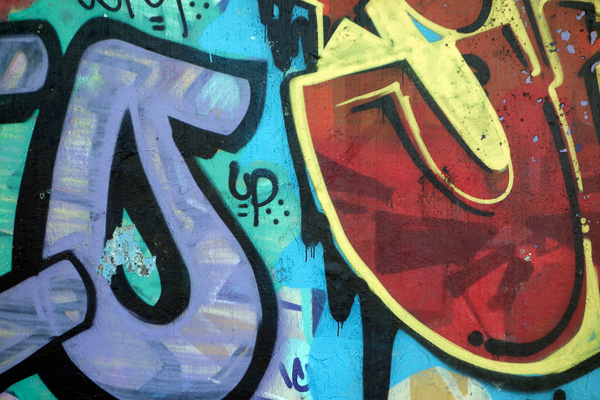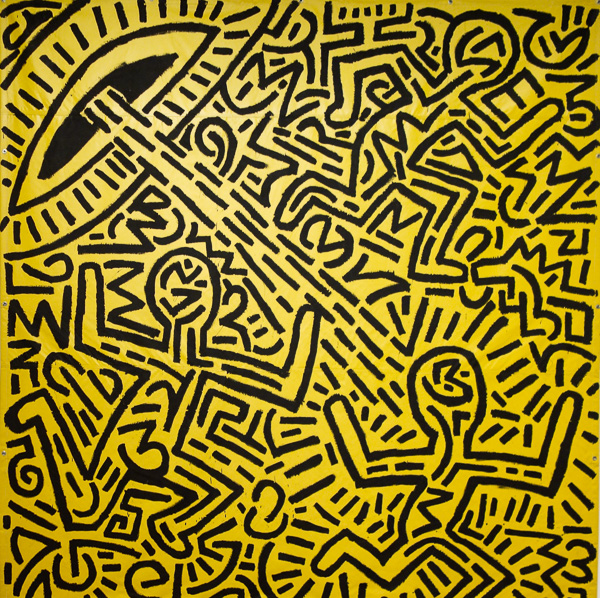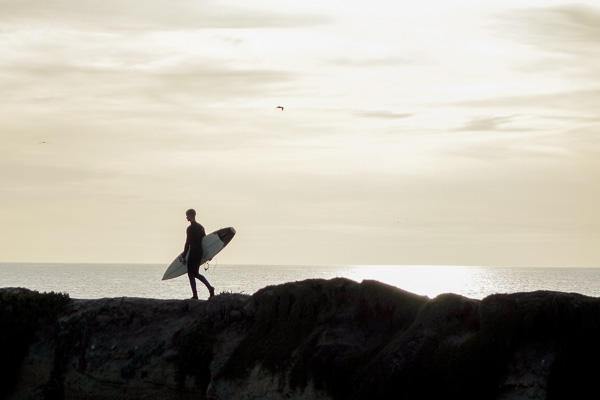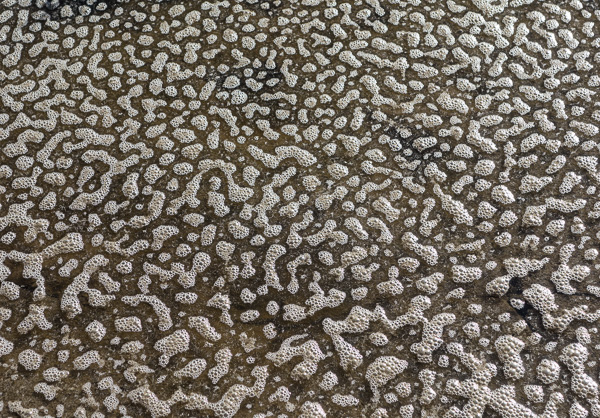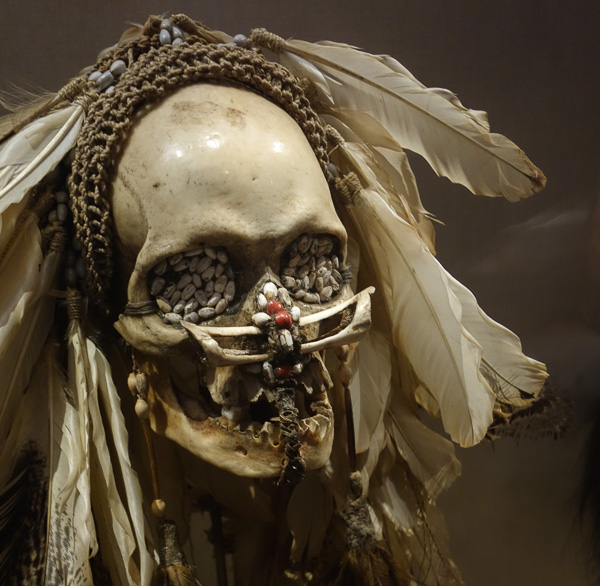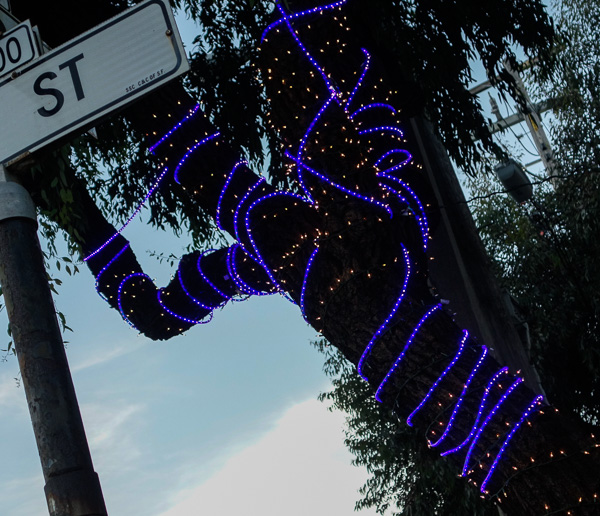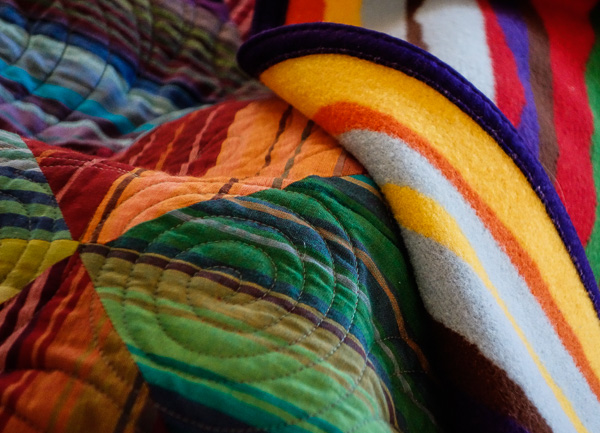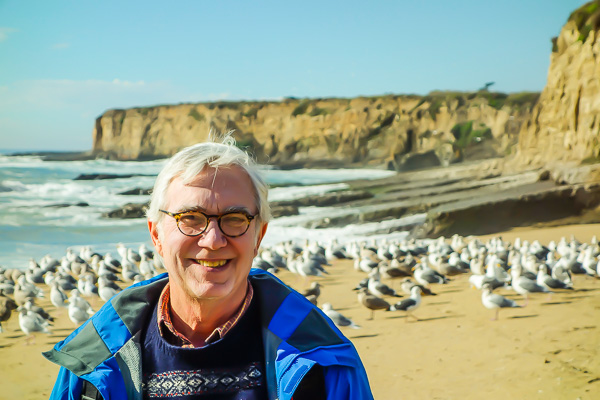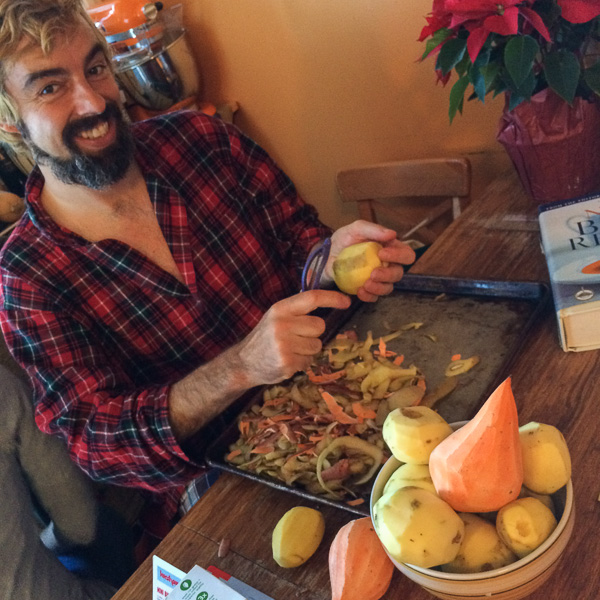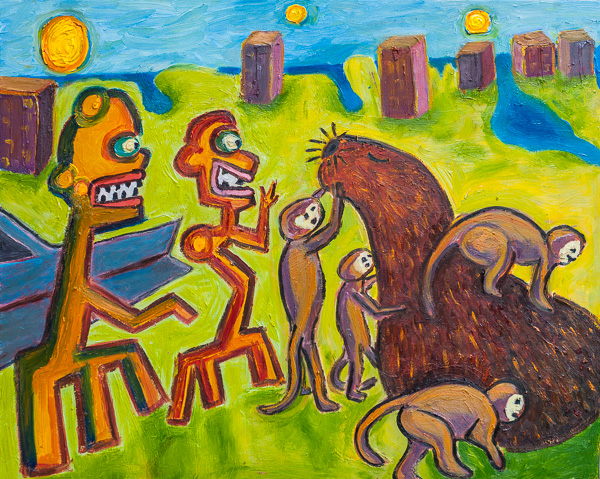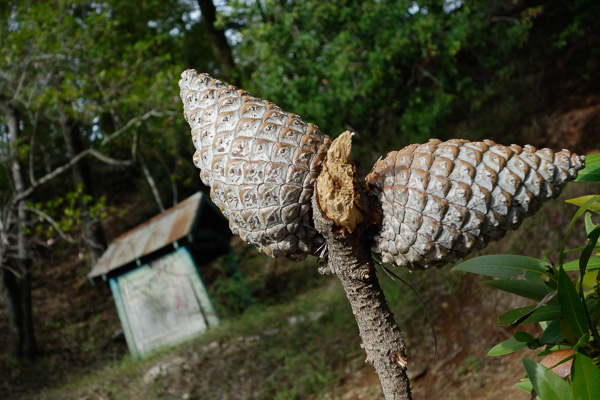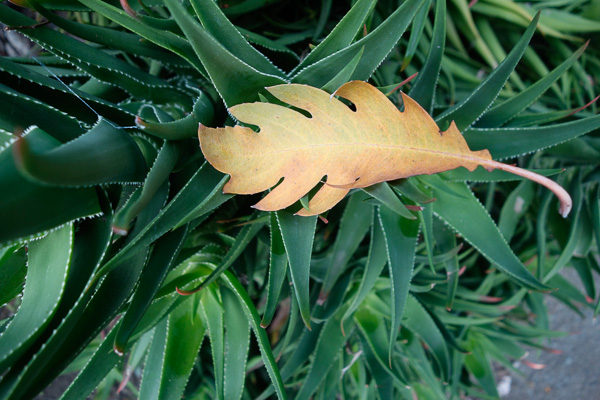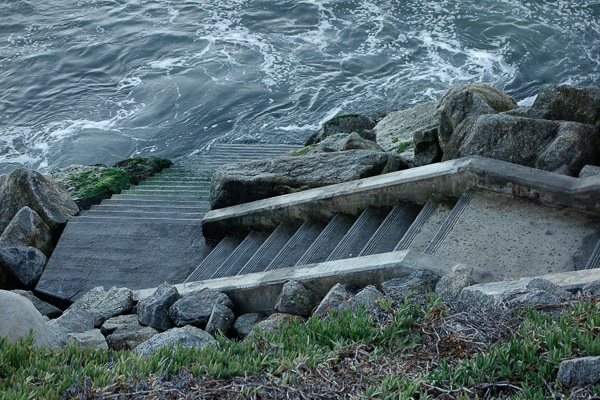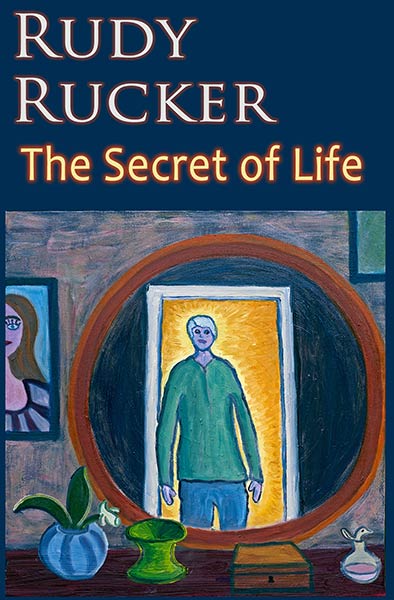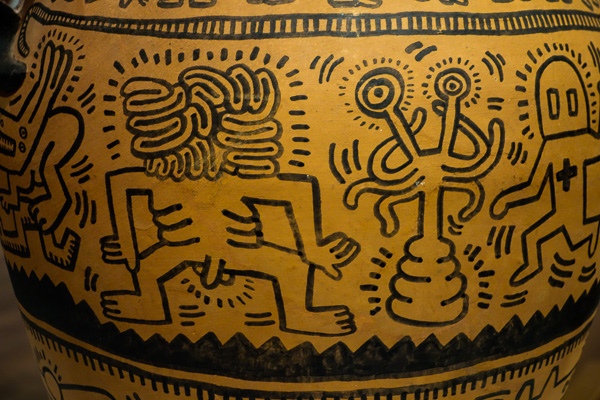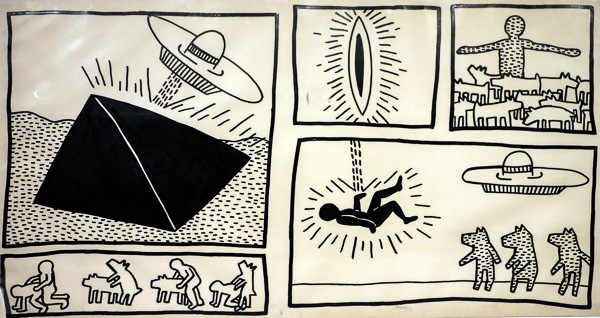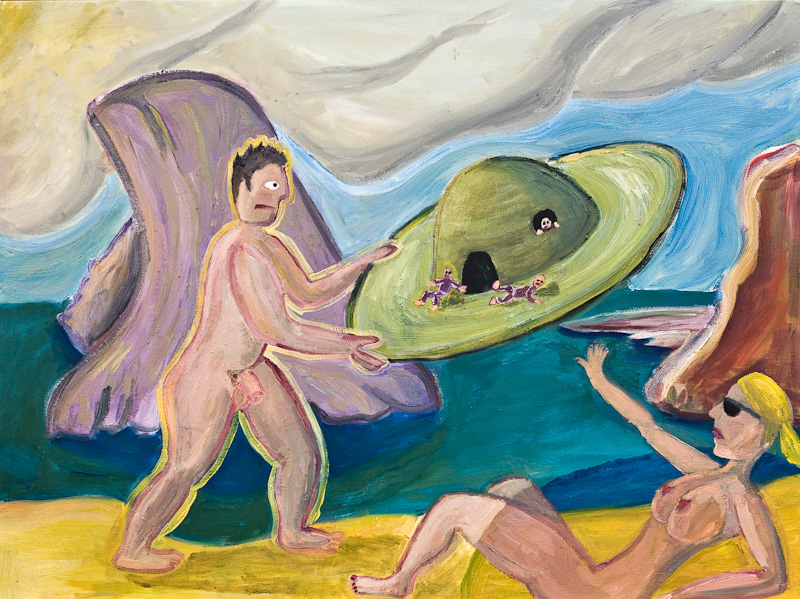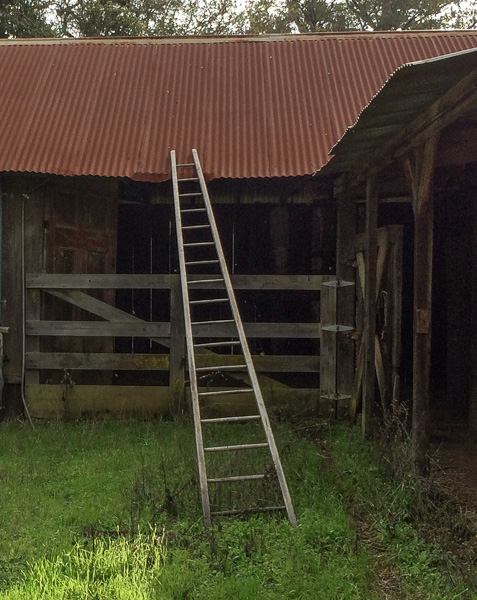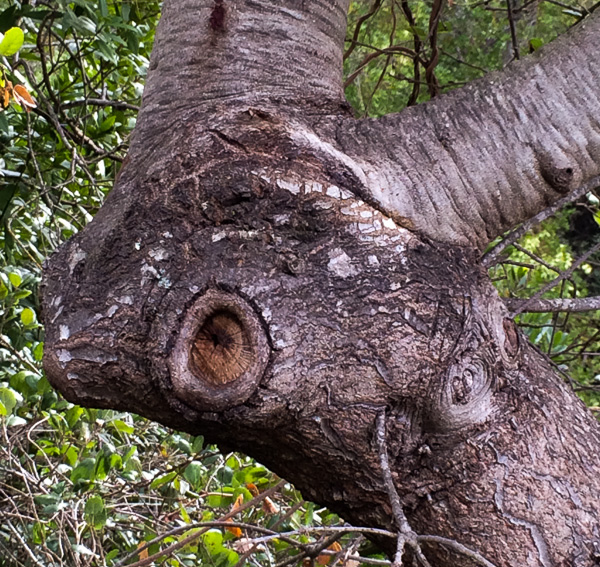Today I’m posting the text of my story, “Laser Shades” for your holiday reading pleasure.
The story was commissioned for The Superlative Light, a photo book by Robert Shults, but it has not been otherwise published as yet.
Two news items before my story.
The writer and columnist Damien Walter posted “Let the Strangeness In,” a good interview/discussion about transrealism between me and Monica Byrne, author of the excellent novel The Girl In The Road.
And, on the same day, synchronistically enough, my film-maker friend Edgar Pêra posted Trans-Realist Maniphesto a video from Lisbon, 1994, with me and good old Terence McKenna.
And now…on with the show..
Laser Shades, by Rudy Rucker
If you want, you can listen to the story online while you read it.
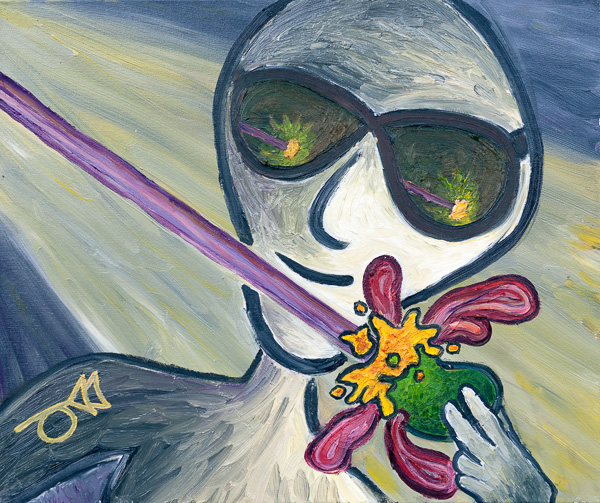
“Laser Shades,” oil on canvas, February, 2014, 24” x 20”. Painted to go with this story. Click for a larger version of the painting.
Adrian was entranced by Carla. She’d hooked him fast, and she was reeling him in—smiling with parted lips and nodding her head in rhythm to the cadences of his speech. Jack, off to one side, wasn’t really listening to the words, no, he was reviewing tonight’s plan. Step one: bump into Adrian. Step two: get into to the laser lab. Step three…
This was a nice club, on Austin’s merry Sixth Street, out towards the dark end of the spectrum. The Scales Fall. They featured yowly music here, one of Adrian’s hobbies—he talked about The Scales Fall all the time, which was how Jack had known they’d find him here. Tonight a hairy guy was playing a “beam guitar,” which was like a steel guitar, but with sensitive light rays in place of the strings. The man wore his hair a hundred-percent over his face, like a cartoon hermit, and the only skin you could see was the tip of his nose. A happy nose.
The beam guitar had a mellow, aethereal tone, sounding like one of those old-time gizmos—theremins. A woman was singing along, kind of a Russian steppes sound, her voice dank and husky, reminding Jack, as so many things did, of his dead wife Yulia. Yesterday it had been six months. A prion infection from her lab. Horrible.
“Did you hear what Adrian said, Jack?” Carla was looking at him brightly. Humoring him.
“Uh, no,” said Jack. “I’m lost in the music. A jellyfish.” He made wiggly motions with his arms, managing to knock over one of their empty Shiner beer bottles. It bounced off the floor, unbreakable nanocrystal.
“Vintage slimefabber move,” said Adrian, laughing at Jack. He was a tidy man with chiseled features.
“Slimefabbing is king,” said Carla, sticking up for Jack. “Forget about brittle, thuddy machines. Jack cultures a wad of fabslime, he sings to it, and it makes what you need. Like the way a peach makes a pit.”
“I know all about that,” said Adrian. “Jack fabs components for my group at the yottawatt laser lab. I’m a plasma ultraoptics tech, right? Jack here’s the only slimefabber in Austin who can make mirrored surfaces. You’ve known him for awhile, huh, Carla? Have you ever heard him singing to his slime?”
Carla giggled and nodded. “Kind of rank,” she said. “All burbly and wet. But maybe a little magical, too.”

Truth be told, Carla had once had a crush on Jack. She’d been Yulia’s research assistant, and with Yulia out of the picture, Carla had half-expected to take her place. But nothing was happening along those lines, and Jack was getting ever stranger. Carla was about done with Jack. As a farewell, she’d let him rope her into helping him with this insane last-ditch scheme he was running tonight. Not that Carla even remotely expected it to work. Because if it did—but never mind that.
“I enjoy my work,” said Jack evenly. “How’s your project going, Adrian? Got those pocket stars happening yet?”
“Pocket stars?” said Carla, playing dumb. As if Jack hadn’t been steadily talking about this stuff for the last month. “What a beautiful name. Did you coin it, Adrian?”
Adrian would have liked to say yes, but he couldn’t. “This guy,” he said, jerking his thumb at Jack. “Good with words. I was going to call them femtoscale fusion reactors. You’ll use them like batteries, see. The technology of batteries is a millstone, a bottleneck, hopelessly stalled. Pocket stars will disrupt the paradigms.”
“What about hard radiation?” asked Carla.
“Not a show-stopper,” said Adrian. “That’s the part I’m working on, matter of fact. Mirror mazes around our little suns. Phase-shift cancellations. Troughs and crests. Optical wizardry. That’s where Jack’s components come in.”
“How’s the latest upgrade working out?” asked Jack in a studiously neutral tone.
“Spectacular!” said Adrian. “We’re past the point of inflection, guy. Up onto the gigabucks slope of the growth curve. One more round of funding and my group can productize.” He lowered his voice. “The latest prototypes—they shed megawatts like dogs losing hair. I even sold some power to the lab. In the right matrix, one of these pocket stars could last indefinitely.”
“Can I see one?” asked Carla. “Pretty please.”
“Well, I wouldn’t be authorized to take you into the lab,” said Adrian. “It’s class-seven secure.”
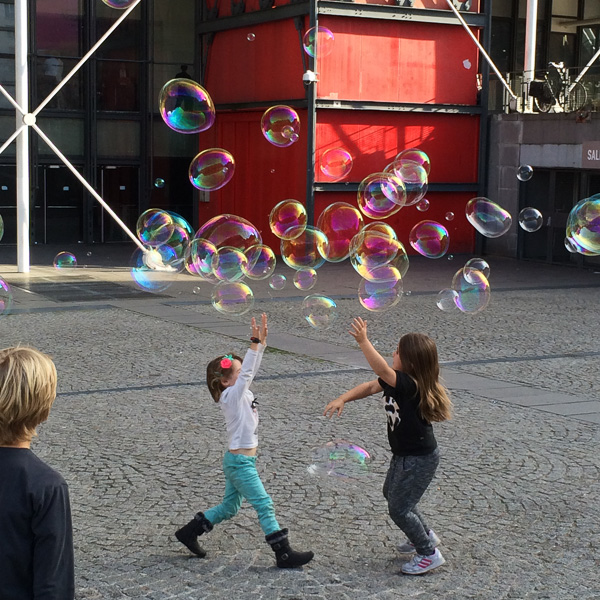
“Oh, it’s Saturday night,” said Carla. “Nobody’s gonna be there. And I’ll show you one of my secrets if you’ll play.” She smiled, working her charm. “Two secrets, maybe.” She drew a little box from her purse, all angles, darkly gleaming, cupping it in the palm of her hand. “The first secret is that Jack slimefabbed something off a sample from my lab. Wouldn’t you love to know what it is?”
“Maybe,” said Adrian, not all that interested. “What’s the second secret?”
Silently Carla mimed a juicy kiss.
“Carla is a postdoc in the mitochondrial genomics group here,” said Jack, before Adrian could properly respond. “Specializing in the Golgi apparatus. She was working with Yulia right up to the end. She even found the fix to neutralize the prion that killed Yulia. Saved the others in the lab. They called her a hero.”
“Soft, wet science,” Carla told Adrian, her voice a tiger’s purr. “Not like those yottawatt laser-beam swords you boys play with. Not like your pocket-pool hydrogen bombs. Genomics is the only femtotech that matters. A cornucopia from the living mother of life.”
“The living mother of life, huh?” said Adrian with a crooked grin. “Does that have anything to do with your second secret?”
“Everything,” said Carla. “Dim things matter, Adrian. Not just bright things.” She was hefting the dark little container in her hand. It had sides like pentagons. “Take us into the laser lab, and this little stash box opens like a clam. You’ll be flabbergasted.”
“Say yes,” Jack urged Adrian, his voice very intense. “You know I’ve been putting in an extra effort for you. And you’ve only let me into the lab that one time when you hired me. I need feedback if I’m going to keep working for you. Don’t worry about Carla. I know all about her.” A touch of ice in his voice.
“Carla is single?” asked Adrian, rudely direct. “Not your girlfriend?”
“Jack’s the grieving widower,” said Carla. “I’m the perky, yearning, star-struck ingénue, rejected once too often. And you can be Prince Charming, Adrian. If you don’t act like a jerk. And if you’re not too chicken to let your friends see what’s in your lab. And if you really do have your pocket stars working. Which I’m starting to doubt.” She paused for effect. “Maybe we should leave, Jack. I don’t think I like this man.” Carla rose to her feet, enjoying her power. She took two steps towards the door. Glanced back over her shoulder.
“Wait!” said Adrian, right on cue. He threw money on the table for the beers and followed Jack and Carla outside.
“I can drive,” said Jack. “I’ve got my whale. I parked it down a side street.”
“Great,” said Adrian. “I came by bus.”

It was a warm November night. The pecan trees were droppping nuts. Carla scooped up a handful, squeezing them together in pairs, eating the ones that gave way.
“The champion pecan,” she said after a bit, holding up a final nut. “He cracked all his friends. But can you even see? It’s so dark tonight.”
“We need our laser shades,” said Adrian, pulling out two pairs of sunglasses. He handed one pair to Carla.
“You’ll like these,” Jack told Carla. “I’ve got my own pair in my car. I helped slimefab them for the lab.”
They were standing by Jack’s car now, an old-school convertible with its top down, a massive construct of Detroit steel. Cars like this were generally illegal to drive, but Jack had a historical preservation permit for his. He drew his pair of laser shades from the glove compartment, and now the three companions were standing there, goggling at each other, goofing on the scene. Although the laser shades had dark lenses, they had infrared laser crystals set into the rims of their frames.
“Ghostly,” said Carla.
“The crystals vibrate,” said Adrian. “Scanning across the things you want to see. Scanning them with infrared, you understand, and the rays bounce back to your special lenses. So you’re seeing a moiré image contour map. With pseudocolors based on temperatures. You look like a singer in a yowly music band, Carla.”
She did a little dance in the street there, brandishing her faceted box and her champion pecan. Jack was in the driver’s seat, ready to go. But now, as often happened, the car failed to start.
“I’ve been working on a fix,” said Jack. He twisted around, rooted though the debris on his back seat, drew forth a crufty glob of fabslime the size of a coconut, and warbled an open-sesame command. Obligingly the hairy orb split in two, revealing a glittering carburetor part, quite unobtainable on the commercial market. Jack flipped up the car’s flappy old hood and installed the piece. Accustomed to this routine, Carla worked the starter until the car let out a dinosaur roar.
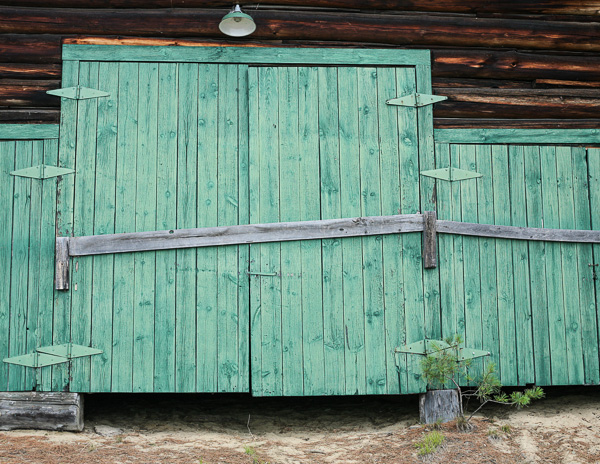
They cruised through the warm dark Austin night, the three of them on the car’s wide front seat, Carla in the middle, the air beating, pecans crackling beneath the wheels, the passing scenery like cartoons seen through their laser-shades.
Adrian had to pass all kinds of thumbprint and eyeball scanner routines to get them down the elevator and as far as the actual entrance to the yottawatt laser lab. And then it became a matter of jollying their way past the gatekeeper, Cruz Sordo, who was somewhat distracted by a holographic ballet-dancing game.
“I’ve nailed my arabesques and fouettés,” said Cruz, rocking back and forth. “I need three perfect grand jetes to reach the next level—which is the virtual Bolshoi. Your two guests are cleared, Adrian?”
“Jack’s already been in this lab before,” said Adrian.
“And Carla’s from a genomics research group,” put in Jack. “She’s bringing an add-on for Adrian’s run.” Adrian let the unexpected claim pass.
“Okay, fine,” said the feckless Cruz. “But I want you folks out of there in ten minutes. Before the lab’s next autoscan.” He backed off and took a running jump across the hall. “Yes! I might even be on the Bolshoi level by then.”
The laser lab was deserted, a bit sinister, with sagging cables, panels with jiggly readouts, work-benches like sacrificial plinths. The place was dimly lit, with stark pools of brightness in certain spots. Filtered through the laser shades, the potentially hazardous light came through in sour greens and tender mauves, in meaty reds and shinbone whites.
A vacuum pump was thumping, with a wheezing sound. “Chirped pulse amplification,” said Adrian. “Like an accordion. Working the light up to the yottawatt level, back and forth, strong enough to zap protons to the petavolt scale. Enough to spark a pocket star. My set-up is over here.” They proceeded down the aisle, first Adrian, then Carla, then Jack.
Jack noticed an intense glow of infrared body-heat coming off of Carla. She was scared, more than scared—terrified. Jack formed a sudden conviction that she was planning to sabotage tonight’s run. Lurching into her from behind, he seized her wrist and pried the precious, crystalline case from her hand.
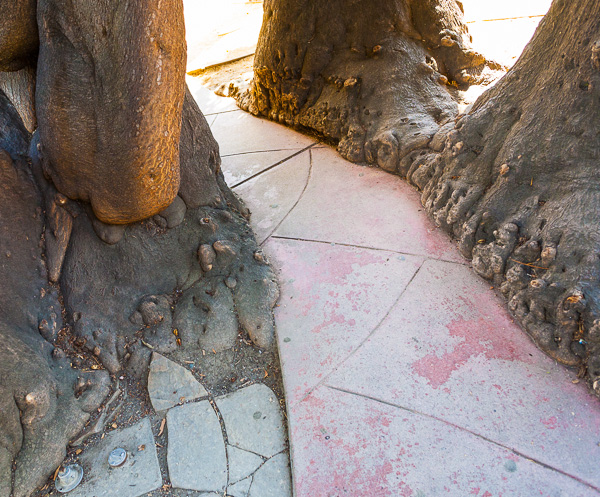
“Jack! I’m the expert on mitochondria.”
“You killed Yulia, Carla. I have to say it. It was your fault. You did it on purpose. To get your hands on me.” There. Laying it out at last.
Carla’s voice rose by two octaves. “You are so crazy! I don’t even like you anymore! Adrian! We need to get out of here!”
“Cruz said we have ten minutes,” said Adrian, not really understanding. “Be quiet and pay attention, you two. My target is right here on this little platform, a piece of foil. See Jack’s mirror-maze next to it? The laser pulse is going to make a pocket star. And then a magnetohydronamic vortex pulls it into the maze. Keep back. The pulse is coming in ten seconds.”
Jack shouldered past them, holding out his faceted box. He flipped a dark pink object onto the workbench—it was a fabslime-woven matrix for Yulia’s mitochondria. Jack was singing, his voice liquid and weird. The magic bean was twitching like a pet.
ZzzzzZZZttt!
The yottawatt laser beam drilled into fleshy lump. The pulse was lasting much, much longer than usual, as if the biotech lump were impossibly sending signals up the beam to its source, jamming all the switches to on. One, then two, little stars bloomed within the shuddering bean. Though scorched and smoking, it held its shape. Jack still hadn’t stopped singing. Adrian and Carla were backing away.
Fueled by the yottawatt beam and by the two pocket stars, the Yulia lump grew larger, taking form, extending arms, legs, and head, channeling energy like a babe at breast.
The thumping of the hidden vacuum pump had risen to a wild tattoo, and now came an explosion. The laser beam winked out. Somewhere in the lab an alarm horn was hooting. Perversely, idiotically, a set of ceiling sprinklers kicked on, raining down upon the scene. Jagged sparks, swirls of smoke, shattering glassware. The remaining lights cut out. Footsteps rushed to the lab door—Adrian and Carla escaping.
In the soft dark, wearing his laser shades, Jack could still see a little bit. Yulia was sitting up. Reborn. Smiling at him.
And now she opened her eyes.
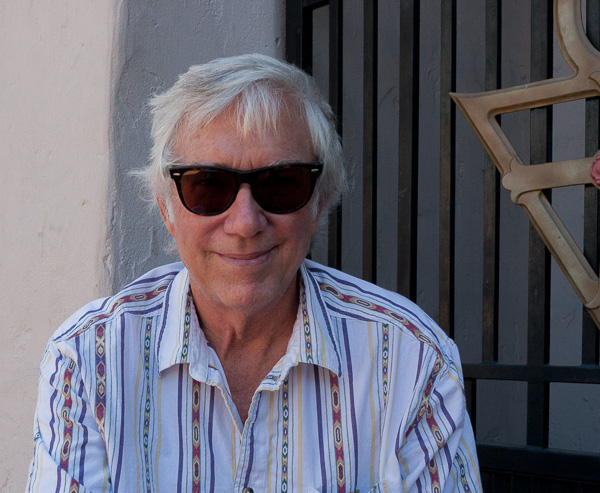
Merry X and a Wild Y!
